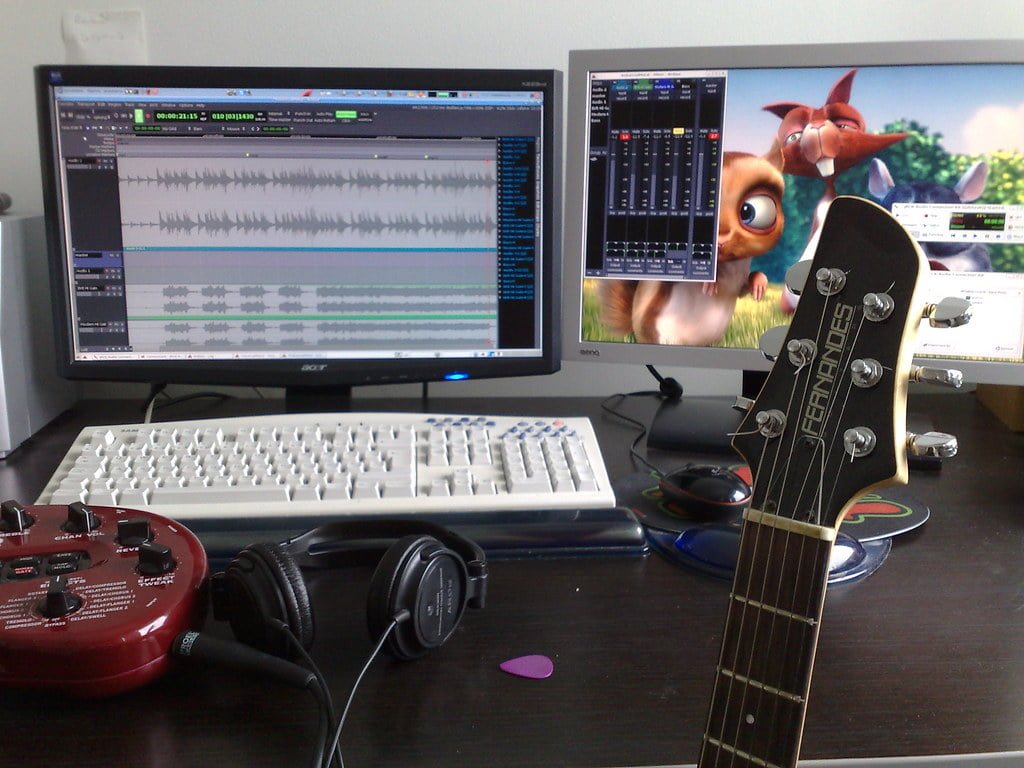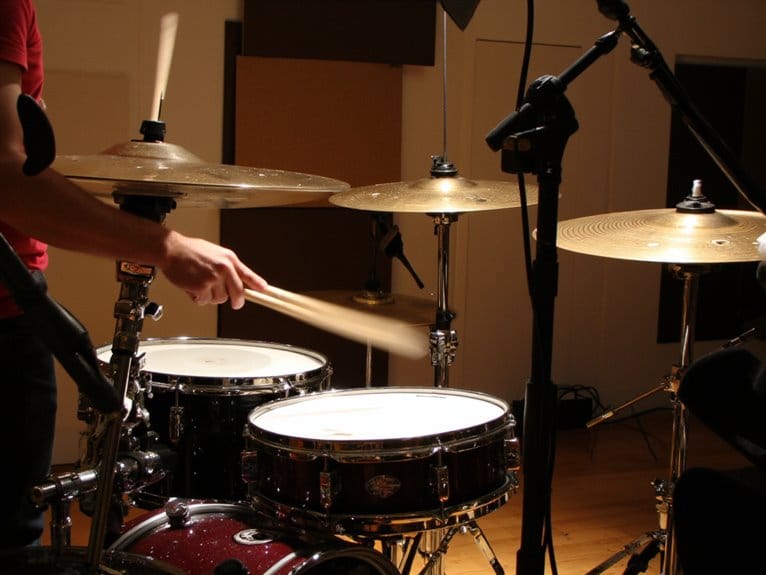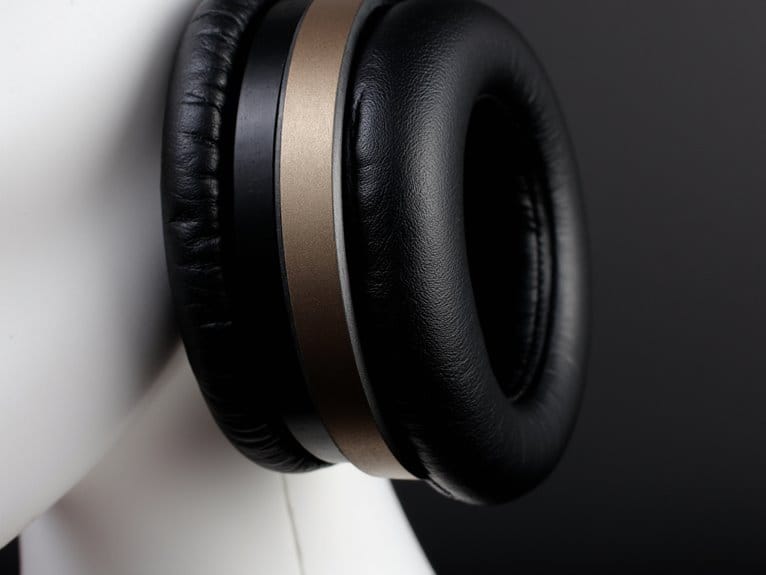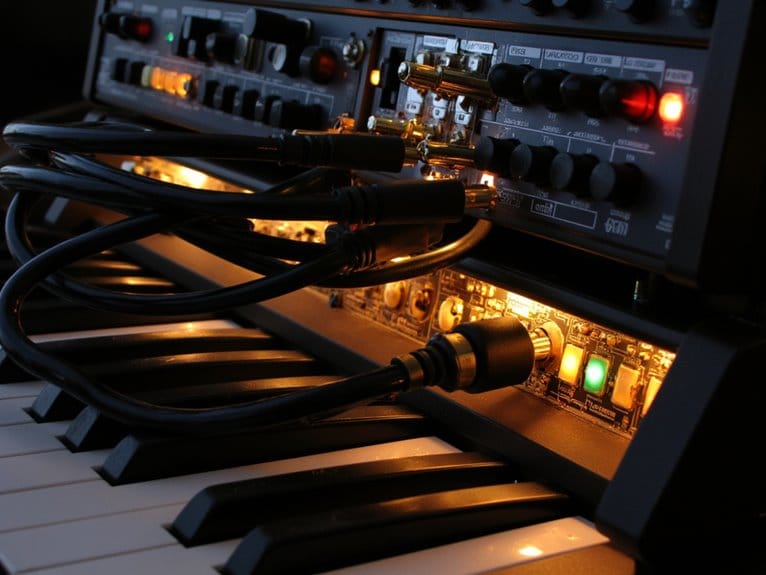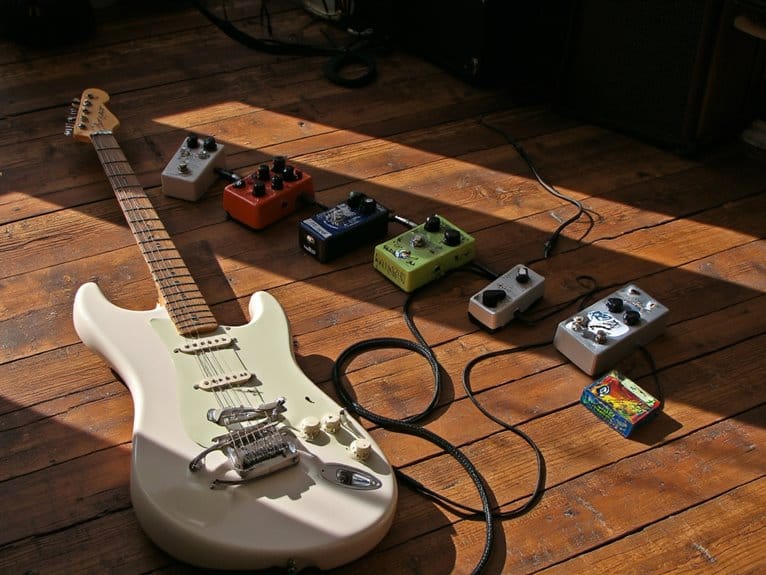DAW for Film Scoring: Meeting the Demands of Cinematic Music Production
I’ve discovered that with Cubase, I can unlock my creativity like never before. Its advanced MIDI editing tools allow me to craft intricate orchestral arrangements, while the extensive selection of virtual instruments and sound libraries elevates my film scoring to new heights. The seamless integration with video playback guarantees every note is perfectly timed to enhance the emotional impact of the visuals. Cubase truly empowers composers to translate their musical visions into impactful scores that resonate with audiences. The possibilities with this DAW are truly endless.
We are supported by our audience. When you purchase through links on our site, we may earn an affiliate commission, at no extra cost for you. Learn more.
Best DAWs for Cinematic Music Production
When creating cinematic music that stirs the soul and captivates the audience, Logic Pro X and Cubase stand out as the premier choices for film composers worldwide. As a film composer, I rely on the powerful MIDI instruments offered by Logic Pro X to bring my compositions to life. The wide range of virtual instruments available in Logic Pro X allows me to craft intricate soundscapes that perfectly complement the visuals on screen.
Cubase, on the other hand, provides exceptional audio quality and a plethora of virtual instruments that add depth and richness to my film scores. The user-friendly interface of Cubase makes it easy for me to navigate through my projects seamlessly, saving time and allowing me to focus on the creative process.
Both Logic Pro X and Cubase offer professional-grade features that are essential for crafting impactful cinematic music. The versatility of these DAWs allows me to experiment with different sounds and textures, helping me create music that enhances the emotional impact of the film. For film composers like myself, having access to tools like Logic Pro X and Cubase is invaluable in bringing our musical visions to fruition on the big screen.
Top Digital Audio Workstations for Film Scoring
In the realm of film scoring, where musical landscapes intertwine with visual storytelling, the selection of Digital Audio Workstations (DAWs) can greatly shape the emotional impact of a cinematic experience. Among the top contenders stands Cubase, a favored tool of renowned film composers such as Hans Zimmer and John Powell. Cubase’s strength lies in its advanced MIDI editing capabilities, allowing composers to craft intricate musical arrangements with precision.
Priced around $600, Cubase offers a diverse array of virtual instruments and sound libraries essential for creating cinematic masterpieces. Its automation features empower composers to imbue their scores with dynamic shifts and expressive nuances, breathing life into the on-screen narrative. The smooth integration of video playback within Cubase ensures that the music aligns seamlessly with the visual elements, enhancing the overall impact of the film.
Furthermore, Cubase’s user-friendly interface, combined with its extensive editing and mixing tools, provides film composers with a versatile platform to express their creativity. Whether manipulating intricate details or fine-tuning the overall mix, Cubase stands as a guiding light for those looking to produce high-quality cinematic music that resonates with audiences on a deep level.
Essential Tools for Film Composers
Film composers wield a powerful arsenal of tools that serve as the heartbeat of their cinematic creations. In the world of cinematic music production, having access to a DAW with pro MIDI editing capabilities is indispensable. These advanced tools allow us, as film composers, to craft intricate orchestral arrangements that breathe life into the stories unfolding on the screen. Virtual instruments are our paintbrushes, and DAWs like Cubase offer a treasure trove of cinematic sounds to enrich our compositions.
Automation features within these DAWs are our secret weapon, enabling us to infuse our music with dynamic shifts and emotional nuances essential for capturing the audience’s hearts. Integration with video playback is our guiding light, ensuring that every note we compose is perfectly synchronized with the visuals on screen, intensifying the audience’s cinematic experience.
Moreover, DAWs tailored for film scoring provide us with specialized tools and workflows designed specifically to meet the unique demands of cinematic music production. These tools are not just instruments; they are extensions of our creativity, empowering us to sculpt soundscapes that resonate with the soul of the story being told. In the hands of film composers, these essential tools are the keys to tapping into the boundless possibilities of cinematic music production.
Meeting Demands of Cinematic Music
Maneuvering the intricate demands of cinematic music requires a symphony of creativity and precision in every note composed. As a film composer delving into the domain of cinematic music production, I find that Cubase stands out as an invaluable tool in meeting these specific demands. The advanced MIDI editing capabilities within Cubase allow me to intricately craft the orchestral pieces that form the backbone of cinematic scores. With a vast selection of virtual instruments and sound libraries tailored for film scoring, Cubase provides me with the sonic palette needed to bring my compositions to life in a cinematic landscape.
Furthermore, Cubase’s automation features empower me to infuse my scores with dynamic shifts and nuances, adding depth and emotion to the music. The software’s seamless integration with video playback is a game-changer, enabling me to synchronize my compositions with on-screen visuals with utmost precision. This feature is vital in ensuring that every beat, every crescendo, and every climax align perfectly with the unfolding narrative of the film.
In the world of cinematic music production, where every sound is carefully crafted to evoke specific emotions and enhance storytelling, Cubase proves to be an indispensable ally for film composers like myself. Its extensive tools cater to the unique demands of the industry, providing a reliable platform for translating musical visions into impactful scores that resonate with audiences.
DAW Selection Guide for Filmmakers
Exploring the domain of digital audio workstations (DAWs) for filmmakers demands a keen eye for smooth integration, essential capabilities, and user-friendly interfaces to bring cinematic visions to life. When selecting a DAW for film scoring, there are important aspects to take into account:
- Compatibility with Video Editing Software: The seamless integration between your selected DAW and video editing software is critical for a cohesive filmmaking process. This guarantees that your music production aligns perfectly with the visuals, enhancing the overall cinematic experience.
- Advanced Audio Processing Capabilities: Look for a DAW that offers advanced audio processing tools to meet the requirements of cinematic music production. Features like high-quality effects, mixing capabilities, and mastering tools are essential for creating professional-grade soundtracks.
- User Interface and Workflow Efficiency: Evaluate the user interface of the DAW to make sure it is intuitive and facilitates an efficient workflow. A user-friendly interface can streamline the film scoring process, allowing you to focus on creativity rather than technicalities.
In the competitive production business, choosing the best DAW, such as Logic Pro, can make a significant difference for filmmakers and sound designers. Incorporating orchestral instruments and sound libraries while taking into account pricing and specific tools catering to filmmakers’ needs will elevate your film scoring projects to new heights.

